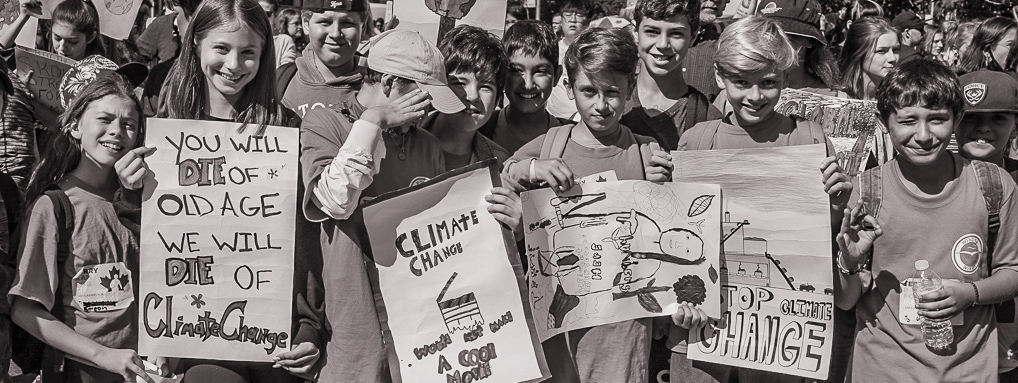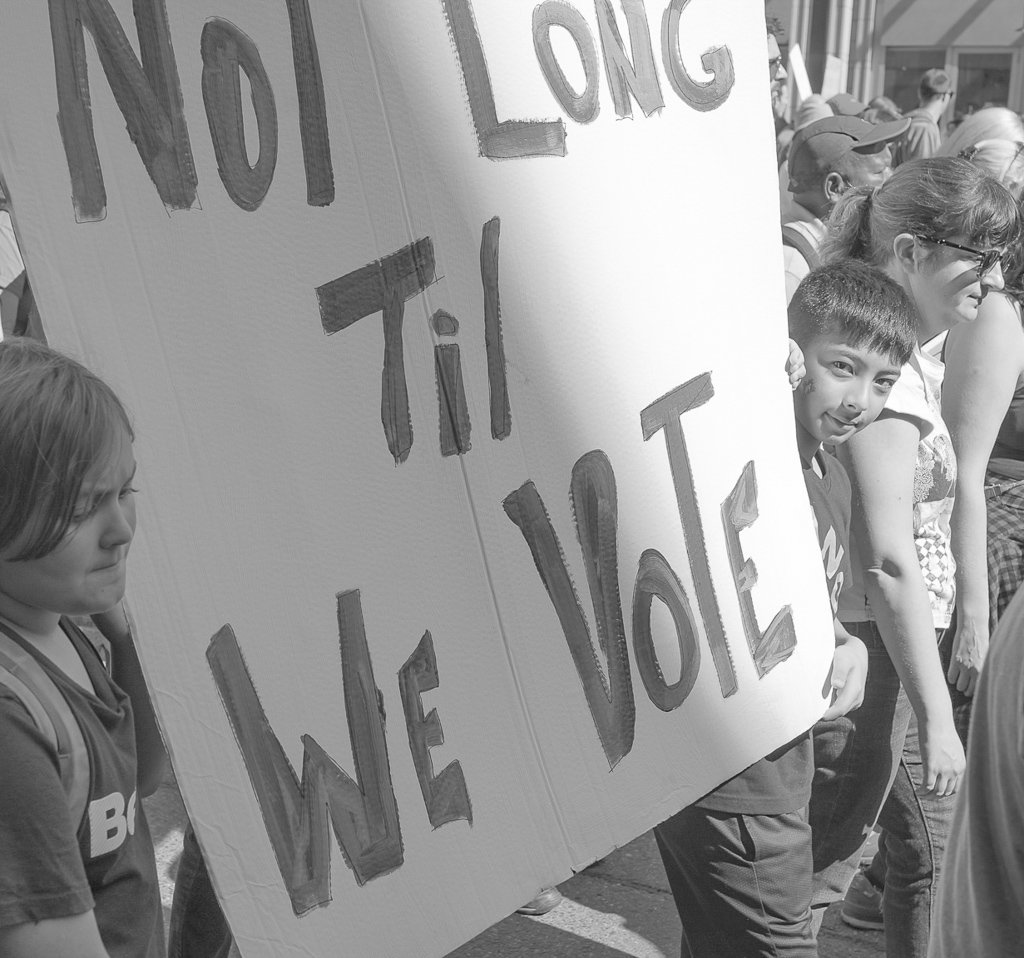
A few of the 20,000 who showed up at the Global Climate Strike, Toronto, Sept. 27, 2019. Photo by Whitney Smith.
Dr. Bridget Bradley spoke of her research participants’ lived experiences with a fusion of heartfelt empathy and academic pragmatism. One man divulged in his interview with her that he grapples with the idea of suicide because he does not want to be a burden on resources. Many others agonize over negligible everyday tasks or habits. Bradley told me that she herself could not have a morning cup of tea at one point without being “overly concerned” about how to dispose of the plastic-lined teabag.
What Bradley’s participants are experiencing is called eco-anxiety, which she describes as “a very particular anxiety and fear around the looming catastrophe that is the climate crisis.” Bradley is a lecturer in the Department of Social Anthropology at the University of St. Andrews in Scotland who explores the power of mental health labels in their cyclical relation with activism and community solidarity. Her most recent research is on the subject of what eco-anxiety looks and feels like in people’s everyday lives. I reached out to her and a few other experts when my own eco-anxiety began to manifest as disengagement from the climate movement.
"You have the option to freeze or to act," she said plainly.
My experience of eco-anxiety began when a journalist approached me at an anti-oil march in 2022 and asked what words of hope I could share. At that moment I saw something with cruel clarity: I became conscious that no protest I had ever attended and nothing I had ever written had changed anything. My 'SYSTEM CHANGE, NOT CLIMATE CHANGE' poster, which dangled uselessly at my side, suddenly seemed naive considering my fears of atmospheric warming, the pro-oil lobby, and Arctic ice sheet collapse. After that realization, I stopped participating in climate protests. What I have found is that when desperation collides with the hopeless feeling that adequate climate policy is light years away, people give up, burn out, or find solace in denial or willful ignorance.
The next person I spoke to was Dr. Courtney Howard, the Vice Chair of the Global Climate and Health Alliance. When I asked her about eco-anxiety’s potential to have a debilitating effect for certain individuals, she described eco-anxiety as comparable to “standing in the middle of the road holding one of my daughters by each hand and watching a truck barrelling down on me.” You have the option to freeze or to act, she said plainly. How do we avoid freezing in the face of a run-away climate catastrophe? How do we ensure that eco-anxiety does not become apathy? Is it even possible to be productive activists within the climate movement while balancing overwhelming fear? My questions sought a future for an unsustainable climate movement.

Patricia Hannaway, Entice, (oil, 50 cm x 72 cm). [o]
Answers emerge on the precondition that we first address any personal aversions to self-identifying with an eco-anxiety label. Dr. Bradley found that her participants overwhelmingly refused to accept any label for what they experience because of the association that mental health labels have with irrationality or medicalization. This is understandable given that neither the climate crisis nor the existential crisis which stems from it can be cured with antidepressants. Nor can they be treated by reclining on a sofa and informing your therapist of the implications of overshooting 1.5 degrees of global warming. However, the fundamental purpose of labels, said Bradley, is to give people a language and context to find what effective treatment means to them.
Katie Monk, a Scottish youth activist, shared, “I’ve found that embracing that label increases awareness. You find other people who have also labelled their eco-anxiety, and it creates a unique sense of community. And then the community gives you hope that there are others who care as much as you, even when, realistically, there’s not much going on governmentally.”
Climate Cafés are intentional social gatherings focused on this type of eco-anxiety-related conversation and solidarity. When they came up in our conversation, Dr. Bradley suggested that augmenting the diversity and frequency of Climate Cafés would give people the opportunity to find affinity groups and feel a heightened sense of support.
Articles that address the subject of how to cope with eco-anxiety tend to advise making small changes in your everyday life to bolster your individual sense of agency and control. This made me wonder why bringing a reusable thermos to coffee shops or lowering my home heating temperature made me feel ineffectual instead of empowered. Jamie Clarke, a climate engagement expert and co-author of Talking Climate: From Research to Practice in Public Engagement answered my unspoken question during a panel at the Ethnic Minority Environmental Network Conference this year. He suggested that action in a vacuum without community support can exacerbate climate-related distress. Taking solitary action may make it feel as though the burden of climate change is entirely upon your shoulders.

A future seeded by intention . . . that holds tough through the worst of times. Photo by Whitney Smith.
Community action is a healthier alternative to isolated efforts, proposed Dr. Howard, and that, comparatively, initiating or partaking in collective action is like constructing a security net around yourself. For example, instead of attempting to finance your own electric vehicle when that may not be feasible, collaborate with your neighbours to petition your municipal council to install more electric vehicle chargers around the city, making the option more accessible for those who can afford it. Relationship-building over a mutual stressor increases personal resilience.
When I recognized that healthy people are the indispensable and beating heart of a sustainable and strong climate movement, mental health soared to the top of my list of priorities. In acknowledging our own eco-anxiety — while at the same time cultivating interpersonal relationships centered around our shared fears and goals — that heart can continue to beat. Even in the face of something as daunting as the existential and environmental crisis of our time. ≈ç
NOTE: If you are having suicidal ideation, call your local hotline and speak to a professional.

Naming things and showing them to the rest of us. Canadian photographer Ed Burtynsky speaks about his motivation to bring his artistic talent to bear on environmental crises.

MADIGHAN RYAN is a student in Sustainable Development and International Relations at the University of St. Andrews and has studied journalism at New York University. She is a member of the University of St. Andrews’ Visualizing Peace Project, a cross-disciplinary student research team for peace building during the era of climate change. Madighan splits her time between Québec and Scotland.

Add new comment